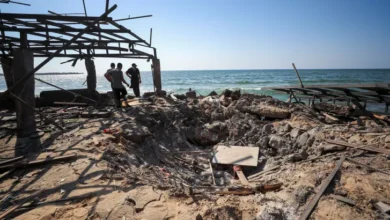US grounds SpaceX’s Starship after fiery mid-air explosion

The United States on Friday grounded SpaceX’s Starship and ordered Elon Musk’s company to investigate why the spaceship spectacularly disintegrated in a fiery cascade over the Caribbean during its latest test mission.
Authorities in the Turks and Caicos Islands confirmed they diverted all flights from their airspace during the incident and urged residents not to touch fallen debris, warning it could be hazardous.
“The FAA (Federal Aviation Administration) is requiring SpaceX to perform a mishap investigation into the loss of the Starship vehicle during launch operations on Jan. 16,” the agency said.
“There are no reports of public injury, and the FAA is working with SpaceX and appropriate authorities to confirm reports of public property damage on Turks and Caicos.”
It added that during the event, it briefly activated a “Debris Response Area” protocol to slow aircraft outside the area where the debris was falling or stop aircraft at their departure location.
“Several aircraft requested to divert due to low fuel levels while holding outside impacted areas.”
Under established procedures, SpaceX will now be required to carry out a “mishap investigation,” including the identification of any corrective actions, which the FAA will review before determining the launch vehicle can return to flight.
Alternatively, the company may seek an early return to flight if it can demonstrate sufficient safety measures and confirm the mishap posed no public risk.
The government of the Turks and Caicos Islands, a British-controlled archipelago, confirmed the diversion of all flights during the incident, which lit up social media with dazzling photos and videos of the meteor-like shower of debris.
Officials also met with UK Space Agency experts and reiterated warnings to residents to avoid fallen debris.
“If possible, take a photograph of the object (without touching it) alongside another object for scale,” a public advisory read, emphasizing, “Space debris remains the property of the spacecraft owner.”
Mars rocket
Starship is the biggest and most powerful rocket ever built, and is key to Musk’s ambitions of colonizing Mars.
NASA hopes to use a modified version of the rocket as a human lunar lander for its Artemis missions to return to the Moon.
Thursday’s uncrewed launch was Starship’s seventh orbital test, and the first involving a taller, upgraded version of the rocket.
SpaceX, which dominates the commercial launch market through its workhorse Falcon 9 rocket, underscored its technical prowess by catching Starship’s first stage booster in the “chopstick” arms of its launch tower for a second time.
But the triumph was short-lived when teams lost contact with the upper-stage vehicle. SpaceX later confirmed it had undergone “rapid unscheduled disassembly,” the company’s euphemism for an explosion.
“Success is uncertain, but entertainment is guaranteed!” Musk quipped on X, sharing one of the many viral clips of the event.
He added the cause of the explosion appeared to be an “oxygen/fuel leak” that caused an excess buildup of pressure.
“Nothing so far suggests pushing next launch past next month,” he ventured.










